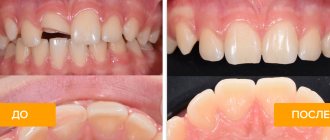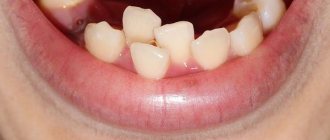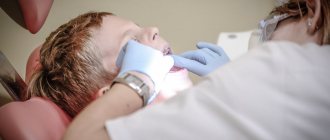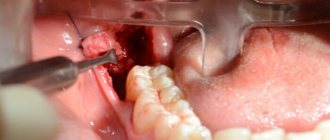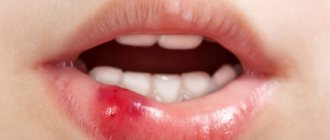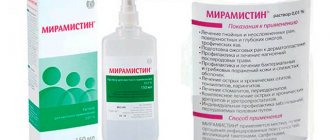Tooth trauma in a child is a common occurrence. Curiosity pushes you to explore the world, and lack of fear and poor coordination of movements lead to falls and hitting your face on the ground.
At least a third of children break or knock out their baby teeth during active games or sports. It happens that when babies learn to walk, they injure their upper and lower incisors by tripping over their own feet. Therefore, it is worth knowing what to do when an incident has already happened.
Act quickly. The tooth can be saved
An injured tooth can be brought back to life if treated as soon as possible.
The work of a pediatric dentist at Idealdent is aerobatics:
- will restore a broken or dislocated tooth;
- splints the mobile group;
- will preserve the nerve so that the damaged dental unit grows and performs functionality.
View prices for pediatric dentistry
If there is no tooth, but the others are loose. What should I do?
In this case, we can use removable dentures made from individual impressions. The missing tooth will be covered with an artificial crown.
Pros:
- a removable denture will preserve diction;
- restore the child’s chewing, bite and self-esteem;
- getting used to it will happen very quickly.
The choice of design and material depends on the specific situation. For some injuries, this is the only possible option while the healing process is underway.
What should parents do when their child knocks out a tooth?
If your baby comes with a broken tooth in his hand, don’t panic and don’t scare him with your reaction. The gums contain a large number of capillaries, so the bruise sometimes looks more serious than it actually is.
Make sure the child does not have other injuries to the face or head that require immediate medical attention. In case of a concussion or a broken jaw, urgent hospitalization is necessary. You'll have to think about the aesthetics of your smile later.
If you are sure that there is no additional damage, rinse your mouth with water, inspect the cavity for debris and rush to the doctor.
Reasons for delaying the replacement of baby teeth
When will permanent teeth erupt and baby teeth fall out?
Reasons for delayed replacement of baby teeth.
The question often arises about when permanent teeth will erupt and baby teeth will fall out. The reason for the slow change is general and local factors.
Common factors include body conditions:
- Chromosomal abnormalities - Down and Turner syndromes
- Nutritional deficiency
- Hypothyroidism
- Gingival fibromatosis and drug-induced gingival hypertrophy
- Cranioclavical dysplasia
Local factors for delayed teething:
- Additional temporary or permanent tooth in the bud
- Changed position of teeth (their rudiments), out of place
- Dental crowding
- Thickening of the gums due to early removal of a temporary tooth
- Trauma or infection of primary teeth
- Immobility (ankylosis) of primary teeth
The timing of teething varies individually: -/+ 6 months for temporary teeth and a year for permanent teeth. Delayed eruption of primary teeth does not require treatment. What to expect in case of primary teeth:
- in premature infants
- children with low birth weight.
If the eruption of permanent teeth is delayed, the child should be examined for the presence of a supernumerary (extra) tooth. Such teeth, as a rule, do not have a full-fledged structure at the macro and micro levels, cannot perform their function and interfere with neighboring teeth. An additional tooth is removed from the dentition.
Crowding of the dentition can be suspected upon examination at 3.5-4 years. If at this age the baby teeth are straight, but there are no gaps between them, you need to consult an orthodontist.
The changed position of the rudiments can most often only be detected by a doctor from an examination image. In this case, individual treatment is selected after diagnosis.
Due to the early removal of a temporary tooth, bone tissue and dense gums form at the site of the hole. The path of the permanent tooth germ is complicated by the thickness of the bone and gums, which leads to slow eruption.
Trauma and infection on the roots of primary teeth can lead to cystic changes in the buds of permanent teeth. In this case, the prognosis for the eruption of such teeth is unfavorable.
Prevention is dental treatment, regular examinations after injury every 3 months.
The last one is the most mysterious reason that raises questions.
The fixed tooth “by eye” is located lower in height than the other teeth. It appears to be embedded in the dentition as a result of predominant jaw growth and eruption of adjacent teeth. Sometimes such a tooth ends up under the gum.
Such teeth are called fixed, submerged or ankylosed because they are tightly connected to the bone. Because of this feature, they most often do not fall out and have to be removed.
Such sunken teeth:
- Occurs equally in girls and boys
- Often combined with the absence of permanent tooth buds
- Scientists have noticed a genetic predisposition
- Occurs together with other anomalies of the teeth, for example, canines and first molars.
The tactics for managing such cases depend on several factors:
- Presence of permanent tooth buds
- Degree of immersion of a baby tooth under the gum
- Resorption of the roots of a temporary tooth
Examinations by a pediatric dentist or orthodontist will help identify this dental condition. Diagnosis (panoramic image) at 6-7 years will allow you to track the dynamics and draw up an action plan to correct the situation.
Where to put the knocked out tooth?
Make sure that the tooth does not dry out and call the clinic. Take the crown part without touching the roots, rinse in cold water. Do not use alcohol, antiseptics, hydrogen peroxide, or mechanically clean dirt.
Suitable for transportation:
- A container for lenses and the saline solution in it.
- A container with milk or a pharmaceutical preparation - glucose, 0.02% furatsilin, novocaine, sodium chloride.
- The victim's own saliva, if nothing is available.
Prevention of childhood dental injuries
In order not to encounter the situations described above, you should take care in advance of the safety of the baby’s oral cavity. Remember that some dental injuries can be prevented by using simple protective measures:
- An excellent protection against injury during active games or sports is a helmet that not only protects the head, but also the teeth.
- To protect your child's teeth, use a mouthguard. This simple dental product provides as much as 85% protection.
- Talk to your children about the importance of being careful when playing. But don't intimidate them.
- Teach your child to fall without injury. Demonstrate how to tuck to avoid head and neck injuries.
- Provide your baby with healthy nutrition with all the necessary vitamins and microelements.
- Teach your child to brush their teeth regularly and visit the dentist every six months.
If you still failed to protect your baby from injury, you should contact your dentist as soon as possible. You can get qualified help at Aesculapius dentistry. In our dentistry you will find first-class equipment and modern treatment methods.
Four specialists work in one shift and they know their job very well. We work with each patient on an individual basis and provide a guarantee for all services. Absolutely all clients are satisfied with the level of service.
Maybe leave it as is? The child has no visible injuries
If the baby is not in pain, there is no bleeding and there is no wound on the gum, everything is probably fine. However, only a specialist can accurately determine this.
Possible consequences of dental trauma in children:
- Nerve damage could occur or an invisible crack may appear, which in the future will lead to a fracture of the coronal part.
- A loose tooth needs to be splinted to prevent it from falling out.
- A chipped piece of enamel will expose dentin, which does not always cause pain. But an infection gets into the place of the chip, and this is fraught with the development of pulpitis and periodontitis. In this case, proper treatment of baby teeth will be required.
We care about the comfort of young patients. They leave us happy. If you have any questions, call us.
Emergency and long-term treatment strategies
When a child knocks out a tooth or significantly damages it, the question arises of what to do. In many cases, the tooth can be saved completely or partially. For any injury, consultation with a pediatric dentist is required. And in cases where a tooth falls out or is broken, you need to see a specialist immediately. If you preserve a splinter or a fallen tooth in an isotonic environment - saline, milk, saliva - then it can be used for restoration or returned to its place in the socket [1]. Water is not suitable for transportation. If the child is old enough, you can place a clean, washed tooth or part of it behind the cheek while traveling to the doctor. Special containers are also sold, which significantly increase transportation time [4]. It is sometimes possible to reliably determine whether the pulp has been damaged only 6 months after the injury [2]. But in some cases, when crowns and roots are fractured, pulp damage is obvious. It is necessary to assess their degree in order to choose the right treatment: partial or complete amputation. For very minor damage, the dentist will suggest direct pulp capping with biocompatible materials. For minor fractures, cosmetic restoration and tooth augmentation are used. Modern composite materials imitate the missing parts of the tooth so well that it is almost impossible to visually notice the difference. However, the extension and restoration of teeth impose certain restrictions: the impossibility of teeth whitening, contraindications to solid foods.
installation of crowns and veneers will be offered as treatment In many cases, aesthetic treatment will be conditionally divided into two periods: temporary and permanent, since children’s teeth grow over many years and the bite takes its final shape closer to 20 years. Until this period, your doctor will suggest a temporary alternative.
Removable dentures
For centuries, dentists have been solving the problem: if there is no root, how to make a tooth? The first option, which has been around for thousands of years, is removable dentures. They were found during excavations of Egyptian tombs and in the territory of the Mayan Indians, so this is one of the most ancient methods of restoring teeth.
What are its advantages? Firstly, it is fast - making a prosthesis takes from 3 to 7 days, depending on the complexity of the work; secondly, it is inexpensive compared to bridges or implants. Modern materials for removable dentures make it possible to create structures similar to natural teeth, but they still have disadvantages:
- service life even with careful care is about 5–7 years;
- constant risk of prosthesis falling out and the need for additional fixation;
- the prosthesis does not stop bone atrophy;
- does not allow the chewing load to be evenly distributed;
- sometimes causes diction defects;
- there is a risk of allergies to acrylic, nylon, silicone and other materials.
Removable prosthetics are now being used if there are absolute contraindications to the installation of bridges or implants, or as a temporary measure while the patient waits for a permanent prosthesis to be made.
What to choose?
What to install if there is no root - a removable denture, a bridge or an implant? The dentist will select prosthetic options based on the condition of the oral cavity and the presence of relative or absolute contraindications. However, today doctors most often offer implant prosthetics. It has only two disadvantages compared to other types - a higher price and a longer period of prosthetics with several stages. However, this is compensated by excellent, long-term and predictable results. In addition, implantation technologies are constantly being improved; there are already techniques and implants that can significantly reduce the time of prosthetics.
How is the treatment carried out?
When choosing treatment tactics, the dentist takes into account:
- how old is the patient;
- how long ago the permanent unit emerged;
- how much the molar crown appeared;
- what condition is the milk unit in;
- does the child have any complaints;
- general condition of the dentition;
- the patient has a predisposition to dental anomalies.
After conducting an in-person examination, the dentist decides whether to pull out the interfering tooth or leave it and wait until its roots resolve on their own. In the first case, local anesthesia is administered and removal is carried out; in the second, the doctor tells you when the baby needs to come for a second examination. Thus, if you deal with the problem of a “shark” smile in a timely manner, it will not cause negative consequences.
When to see a doctor
Doctors believe that a “shark” smile can last up to two to three months, then it is necessary to take action. If the baby tooth does not fall out within the specified period, it needs to be removed. If you do not do this, the complications described above may occur.
But what’s even worse is that the child’s bite may be disrupted. The permanent unit will take the wrong position or be at the wrong angle. Then you will have to correct its position using plates or braces, and this is always difficult and time-consuming.
It is important to know! If a permanent tooth has come out, but the baby tooth has not yet fallen out, you can monitor the situation for several weeks. It is important to ensure that the child carefully maintains oral hygiene. If after two or three months nothing has changed, you need to make an appointment for your baby to see a dentist. But this recommendation is relevant only if the little patient is not bothered by anything and does not complain of toothache.
What does a “shark” smile lead to?
Should you be scared if a new unit comes out, but the milk unit does not fall out? This situation should alert parents. Double dentition can lead to problems with articulation and diction. Then the child will have difficulties with the correct pronunciation of sounds and words.
Also, many patients with the described anomaly have difficulty eating food - they feel uncomfortable biting off hard foods, and when chewing them, small particles often get lodged under the gum. This means that the child will get used to swallowing poorly chewed food. This leads to disturbances in the functioning of the gastrointestinal tract, including flatulence and abdominal pain.
It happens that children who have double units in several places at once begin to lose weight. This is again due to improper chewing of food. During a meal, they swallow large pieces and because of this they swallow a lot of air. Therefore, they often have the illusion of satiety - a feeling of fullness when very little has been eaten.
Among the dental complications caused by untimely change of units:
- caries;
- inflammation of the gums;
- deposition of a large amount of soft plaque.
Therefore, you should not put off visiting the dentist. The doctor will conduct an examination and decide whether to remove the extra unit.
Part of the molar is movable
Teeth can become loose and fall out in parts. When half a tooth is loose, the dentist takes an x-ray to determine whether the root is affected or only the outer part of the crown is damaged. If the root is not damaged and the base is preserved, then it can be saved. The upper part of the crown is removed and a pin is installed in its place. Then extension is carried out. If the pin cannot be placed, then a polymer filling is placed, and a crown is placed on it. When a tooth becomes very loose and the root is crushed, it is removed and an artificial crown is placed in its place.
Content:
- Causes of the anomaly
- What does a “shark” smile lead to?
- When to see a doctor
- When to hesitate to see a doctor
- How is the treatment carried out?
The situation when a molar has erupted, but the milk tooth is in no hurry to leave its place, dentists call a “shark” bite. This is due to the fact that sharks also have units arranged in two rows. In humans, such an anomaly does not look aesthetically pleasing at all. Parents usually get very scared when they see a “double” smile on their child. Should I be concerned if a tooth comes out but the baby tooth does not fall out, and what could this lead to? Let's figure it out together.
When to hesitate to see a doctor
If a “shark” problem appears and the child complains of pain, the gums are inflamed, swollen, you need to immediately get dental care. Also warning symptoms are:
- bad breath;
- bleeding of the affected gums;
- separation of pus in the area of inflammation;
- severe discomfort while chewing food.
You should not wait a day if the child has a predisposition to malocclusion, for example, if he has previously undergone treatment for malocclusion or one of the parents wore braces. In all these situations, removal should be carried out as soon as possible. This measure will be a good prevention of possible complications.
Oral hygiene after tooth extraction
Immediately after you have pulled out the tooth, you need to moisten a cotton ball with chlorhexidine and place it in the hole for 10 minutes. If a small amount of blood appears, then use hydrogen peroxide for these purposes - it not only disinfects, but also helps stop minor bleeding.
To form a full-fledged blood clot, as well as to prevent food particles from getting into the wound and causing infection, after the manipulation the child is not allowed to eat or drink for 2 hours. Please note that alcohol and vodka are not used to treat wounds in children.
Further care after baby tooth extraction:
- On the first day, brush your teeth without touching the socket with the brush. You should not use a paste - its components will irritate the wound surface.
- Rinse your mouth with chamomile decoction and a weak soda solution 4-5 times a day for 5-7 days. It is imperative to carry out this procedure after eating to remove food debris - otherwise an inflammatory process may develop.
- Eliminate salty, spicy and hard foods from the diet for 5 days. These products have an aggressive effect on the mucous membrane and can cause bleeding from the socket and pain.
- In children with frequent inflammatory diseases of the oral cavity, a warm antiseptic solution of furatsilin can be used for rinsing.
Author: Zhukov M.A.
Dental implantation
A provocative question: is it possible to put a crown on the root of a tooth? Yes, if this root is an artificial implant made of titanium alloy or even zirconium. Installing an implant solves almost all problems with tooth loss:
- stops bone atrophy;
- completely restores the natural distribution of chewing load;
- no damage to neighboring teeth;
- excellent aesthetic result;
- implant service life - from 25–30 years to lifelong;
- a large number of possible options for creating crowns - ceramics, metal-ceramics, solid zirconium or zirconium with ceramic lining;
- ease of care, no different from the hygiene of natural teeth.
